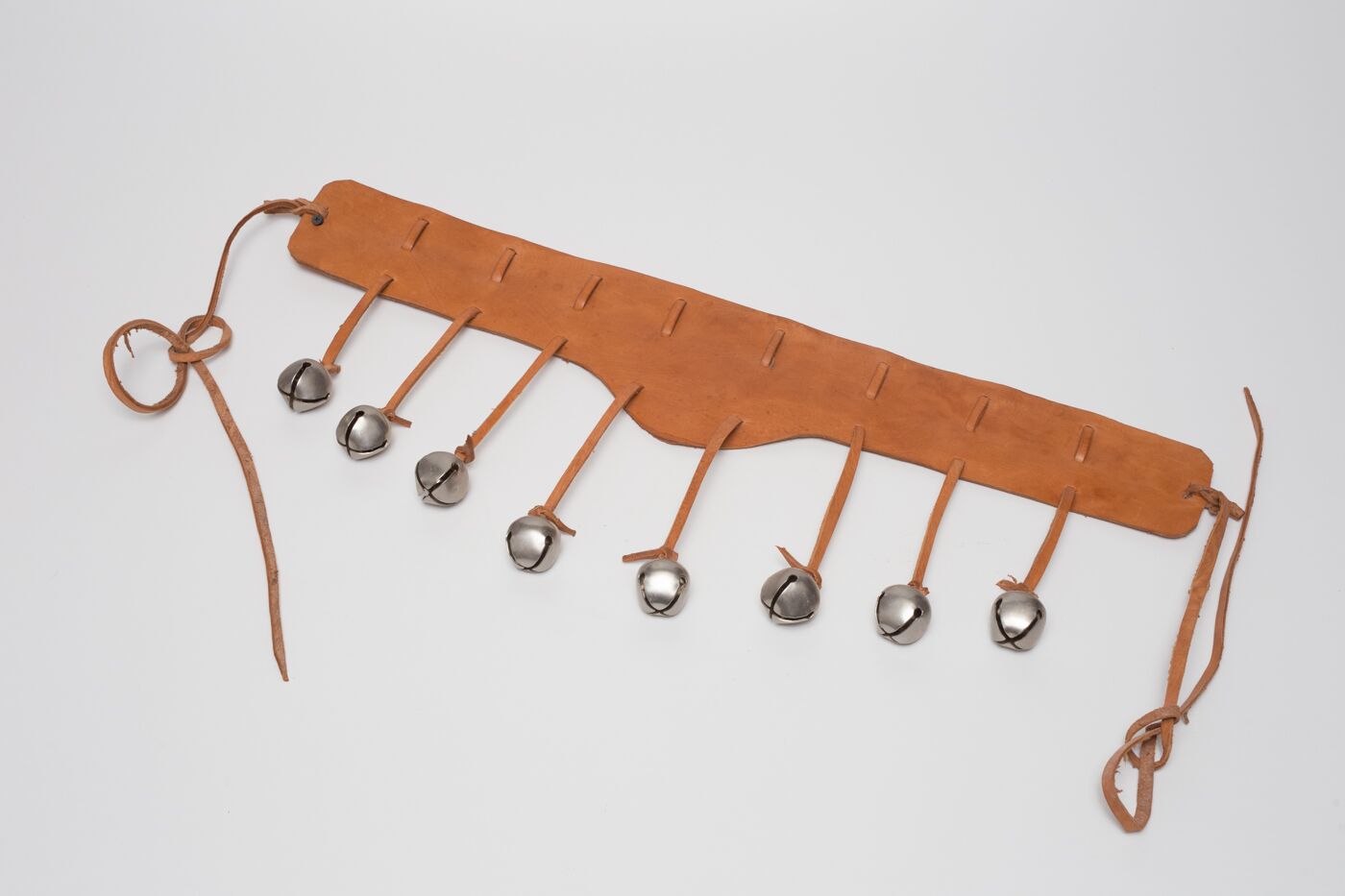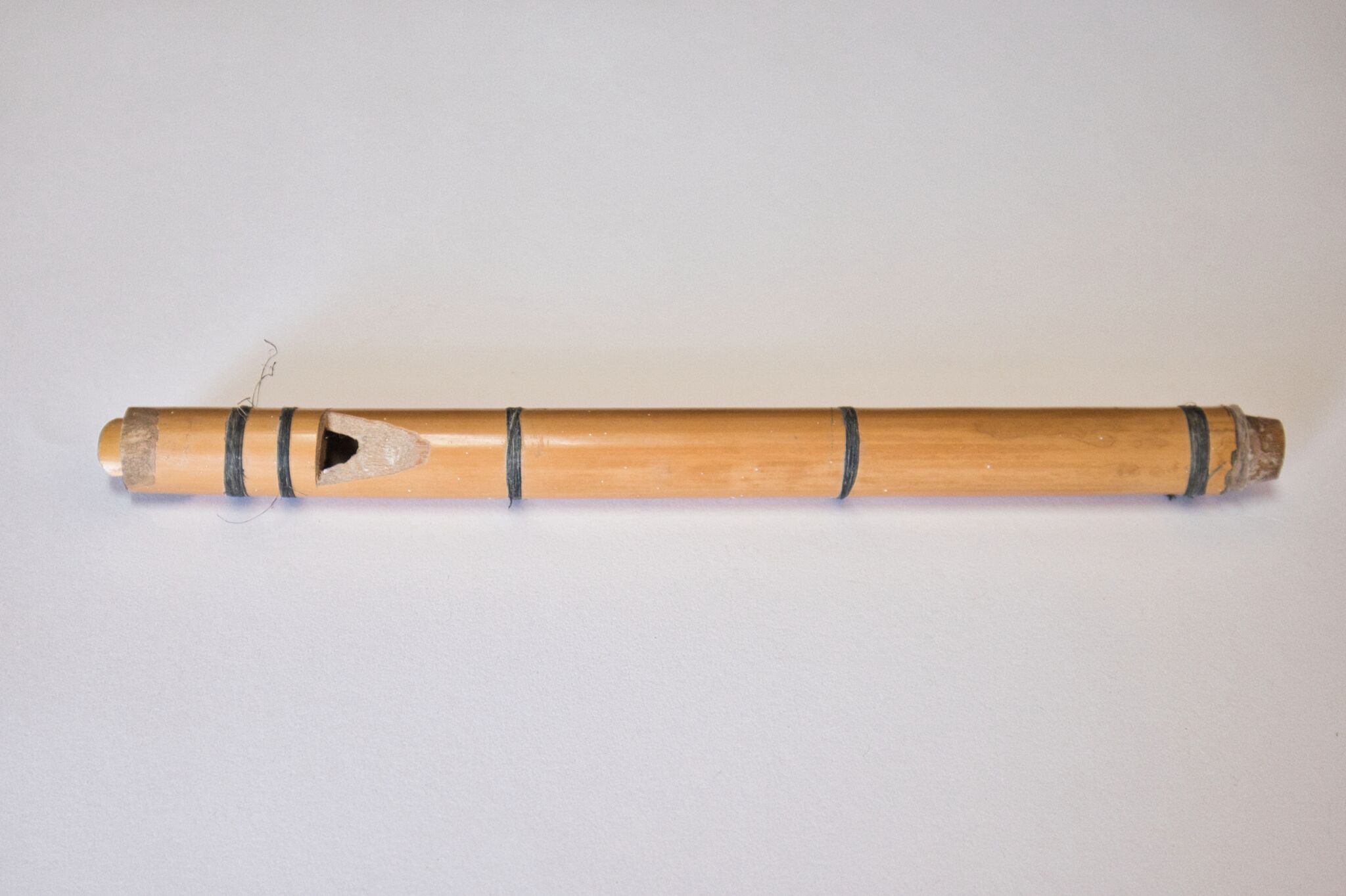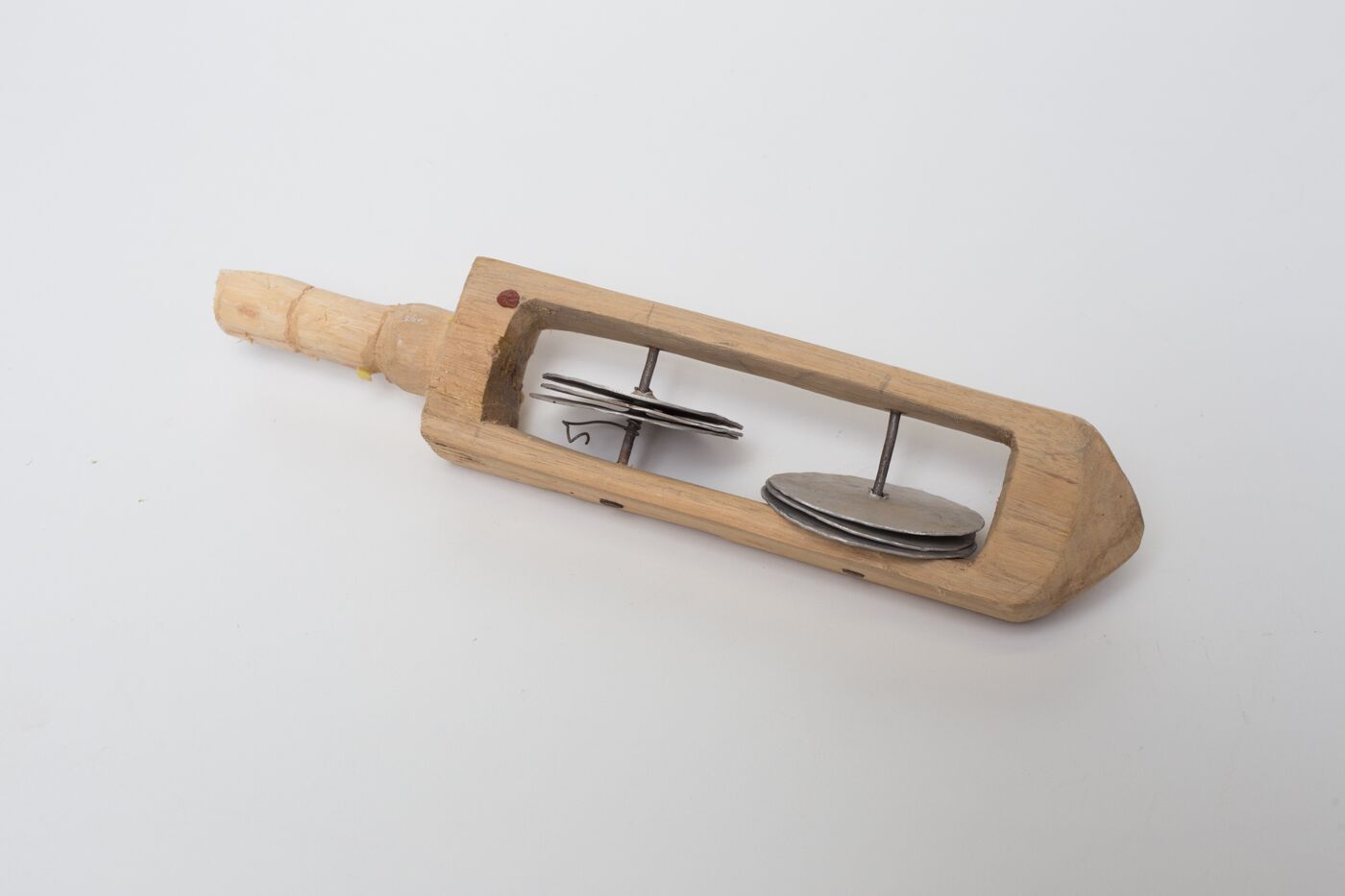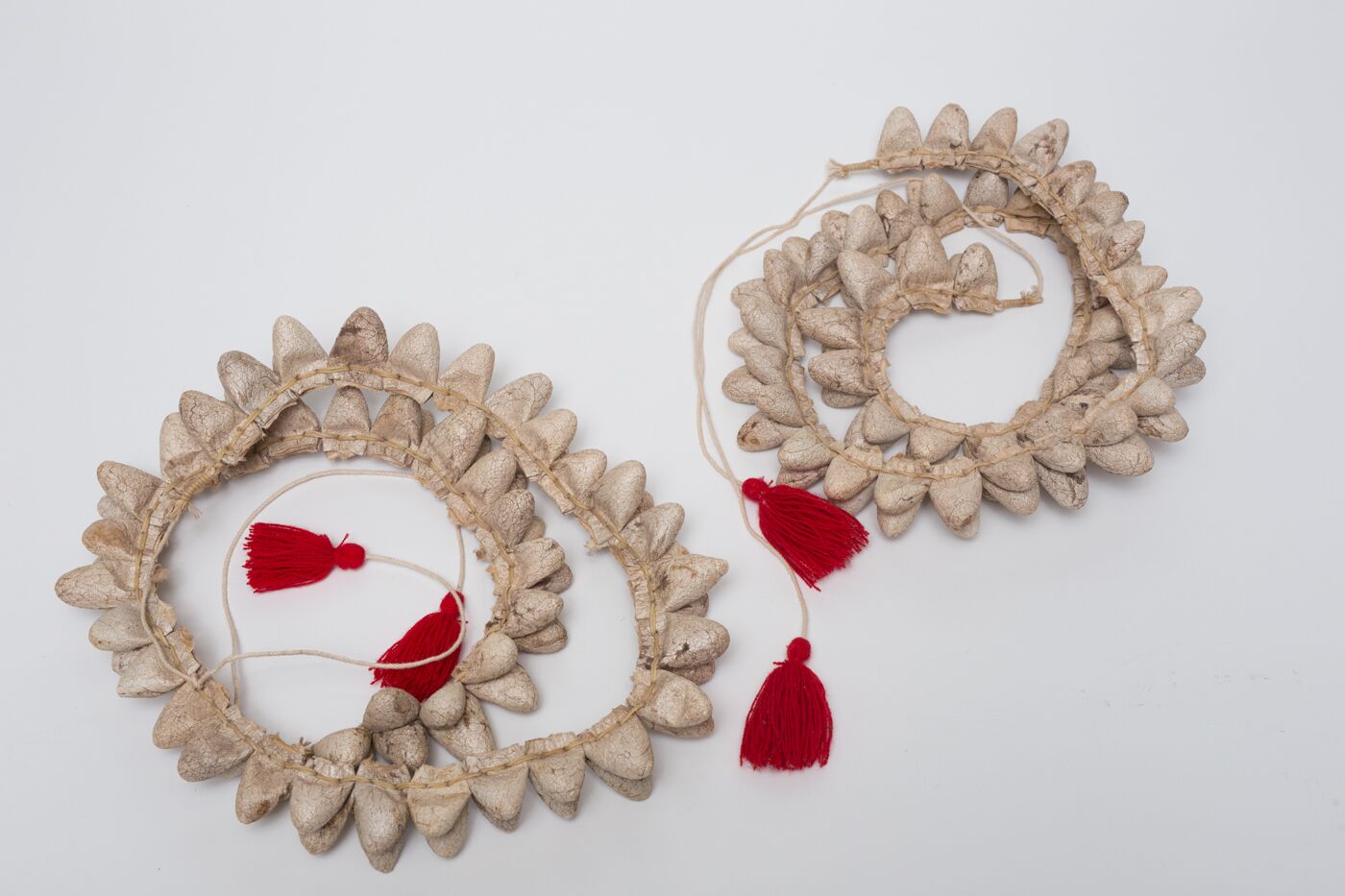-
 CoyolisDownload
CoyolisDownload
The Coyolis is a belt for ceremonial use, part of the attire of the Pascola dancer. Made of leather in the form of a sash that covers the front and side of the dancer's waist, while there are strips of the same material to hold the sash and others that carry a bell at the end, each one made of brass. Etymologically the word coyolis comes from the yoeme coyolim and means bells. Symbolically it represents the union and strength of the Yaqui peoples, reflected in the eight bells contained in the belt, the two central ones are attached with longer strips than the rest, with the purpose of assuming the two heads of the Yaqui tribe: Vícam and Pótam. The historical records about the use of instruments like this one, from which metal bells hang and not other types such as seashells, are only applicable to the ethnic groups in the north of the country, this under the argument that they are original groups made up mostly of farmers, and they have always been more linked to the land than to the sea, since from it they have obtained their sustenance and the symbolic associations that make up their conceptual world (Varela, 1986).
Metadata
Title
Pascola Dancer Bells Belt
Alternative title
Koyolim
Creator
Yaqui tribe
Created
2008
Description
Original object (physical):
Dimensions: 32 X 2.40 X 71 cm.
Leather technique
Description
The Coyolis is a belt for ceremonial use, part of the attire of the Pascola dancer. Made of leather in the form of a sash that covers the front and side of the dancer's waist, while there are strips of the same material to hold the sash and others that carry a bell at the end, each one made of brass.
Etymologically the word coyolis comes from the yoeme coyolim and means bells. Symbolically it represents the union and strength of the Yaqui peoples, reflected in the eight bells contained in the belt, the two central ones are attached with longer strips than the rest, with the purpose of assuming the two heads of the Yaqui tribe: Vícam and Pótam.
The historical records about the use of instruments like this one, from which metal bells hang and not other types such as seashells, are only applicable to the ethnic groups in the north of the country, this under the argument that they are original groups made up mostly of farmers, and they have always been more linked to the land than to the sea, since from it they have obtained their sustenance and the symbolic associations that make up their conceptual world (Varela, 1986).
Format
Still image / jpg
Spatial
Sonora , Cócorit
Temporal
2001 - 2010
Is part of
Music and dance room, Museum of the Yaqui people
Provenance
Museum of the Yaqui people. Sinaloa and Obregon No. 200, Cocorit, Cajeme, Sonora
Acquired for the reopening of the museum in the town of Cócorit. It is exhibited in the traditional festival room of the Museum.
Language
eng , yaqui
Date
2021-09-21
Identifier
Web Catalogación Obregón 2016 - 2675
ISC-CGPC-MY-0011
RS-OM-MEY-11
Relationship
Pascola Mask | Pascola Drum | Moth Cocoon Ankle Rattles Pascola Length | Deer dancer | Pascola dancer | Pascola dancer video | Deer Dancer Hooves Belt
References
Varela-Ruiz, Leticia T. (1986). La música en la vida de los yaquis . Sonora: Secretaría de Fomento Educativo y Cultura
Contributor
Sonoran Institute of Culture
Casanova, Juan (photography)
Buitimea Flores, Teodoro; Ruiz Félix, José María (investigation)
Valencia, Carlos ; The Yaqui Pride Project (translation to english)
License

This work is licensed under a Creative Commons Attribution-NonCommercial-ShareAlike 4.0 International License.
Rights
Sonoran Institute of Culture



